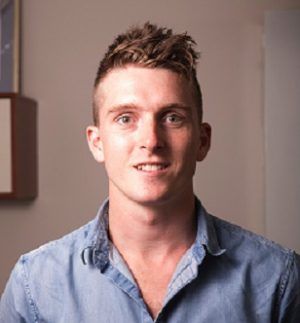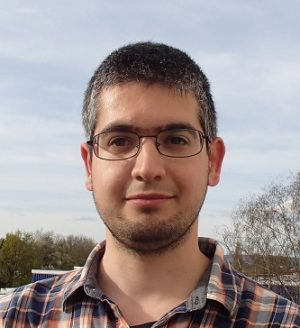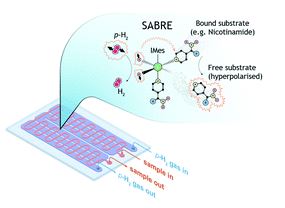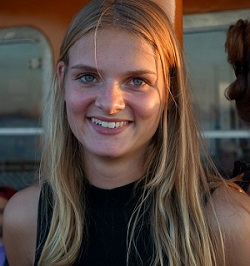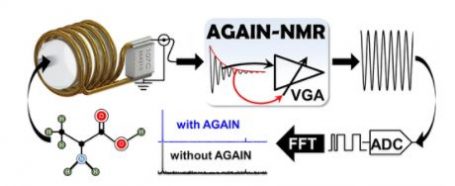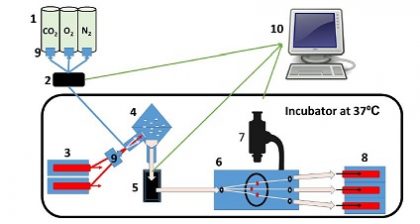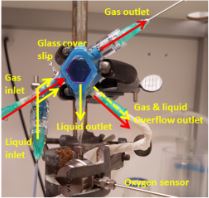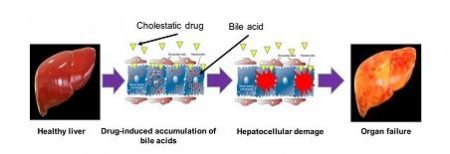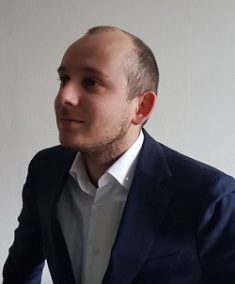Nikolaas is a student at the University of Groningen, currently completing his MSc in Medical Pharmaceutical Sciences. Previously, he graduated with a Bachelor of Science (2017) from Monash University in Melbourne, Australia. Nikolaas’ master research project involves investigating and characterizing the precision-cut liver slice model for use within microfluidic systems. His research is conducted under the supervision of Ruby Karsten, Prof. Sabeth Verpoorte and Prof. Peter Olinga.
Category: News
Lorenzo Bordonali
Lorenzo Bordonali is a Postdoctoral research fellow at the Karlsruhe Institute of Technology (KIT). After a master diploma in Condensed Matter Physics obtained in 2009 at the University of Pavia, Italy, he continued his studies within the graduate program at the same university. In 2012 he received a PhD in Physical Sciences of Matter on the topic “Spin Dynamics of Superparmagnetic nanoparticles investigated by solid state NMR”.
In 2014 he joins the group of Prof. Jan. G. Korvink at the University of Freiburg (IMTEK), where he develops hardware for miniaturized NMR hyperpolarization with para-hydrogen. He is currently in Prof. Korvink’s group and part of the TisuMR research team at the Institute of Microstructure Technology (KIT-IMT) working on micro-NMR hardware design and integration of MEMS technology and NMR.
Parahydrogen based NMR hyperpolarisation goes micro: an alveolus for small molecule chemosensing
Complex mixtures, commonly encountered in metabolomics and food analytics, are now routinely measured by nuclear magnetic resonance (NMR) spectroscopy. Since many samples must be measured, onedimensional proton (1D 1H) spectroscopy is the experiment of choice. A common challenge in complex mixture 1H NMR spectroscopy is spectral crowding, which limits the assignment of molecular components to those molecules in relatively high abundance. This limitation is exacerbated when the sample quantity itself is limited and concentrations are reduced even further during sample preparation for routine measurement. To address these challenges, we report a novel microfluidic NMR platform integrating signal enhancement via parahydrogen induced hyperpolarisation. The platform simultaneously addresses the challenges of handling small sample quantities through microfluidics, the associated decrease in signal given the reduced sample quantity by Signal Amplification by Reversible Exchange (SABRE), and overcoming spectral crowding by taking advantage of the chemosensing aspect of the SABRE effect. SABRE at the microscale is enabled by an integrated PDMS membrane alveolus, which provides bubble-free hydrogen gas contact with the sample solution. With this platform, we demonstrate high field NMR chemosensing of microliter sample volumes, nanoliter detection volumes, and micromolar concentrations corresponding to picomole molecular sensitivity.
Ruby Karsten
Ruby Karsten received her BSc degree (2015) in Life Science and Technology and her MSc degree (2017) in Medical Pharmaceutical Sciences from the University of Groningen. Her first master project at the University of Groningen was dedicated to precision-cut liver slicing technique as a model to study drug-induced cholestasis. The second master project was about the incubation of cell spheroids in a liver bioreactor and was performed at ScitoVation, North Carolina, USA. In November, 2017 she began her graduate studies under the supervision of Prof. Sabeth Verpoorte and Prof. Peter Olinga. Her contribution to the TISuMR project will be the development of a microfluidic device for the incubation of precision-cut liver slices to study drug-induced cholestasis.
Automatic Adaptive Gain for Magnetic Resonance Sensitivity Enhancement
Mazin Jouda*, Erwin Fuhrer, Pedro Silva, Jan G. Korwink and Neil Mac Kinnon*
The decaying nature of magnetic resonance (MR) signals results in a decreasing signal-to-quantization noise ratio (SQNR) over the acquisition time. Here we describe a method to enhance the SQNR, and thus the overall signal-to-noise ratio (SNR), by dynamically adapting the gain of the receiver before analog-to-digital conversion (ADC). This is in contrast to a standard experiment in which the gain is fixed for a single data acquisition and is thus adjusted only for the first points of the signal. The gain adjustment in our method is done automatically in a closed loop fashion by using the envelope of the MR signal as the control signal. Moreover, the method incorporates a robust mechanism that runs along with signal acquisition to monitor the gain modulation, enabling precise recovery of the signals. The automatic adaptive gain (AGAIN) method requires minimal additional hardware and is thus general and can be implemented in the signal path of any commercial spectrometer system. We demonstrate an SNR enhancement factor of 2.64 when applied to a custom spectrometer, while a factor of 1.4 was observed when applied to a commercial spectrometer.
Microfluidic system for real-time monitoring of biliary transport in precision-cut liver slices
Maciej Grajewski, Ruby E.H. Karsten, Gert IJ. Salentijn, Peter Olinga and Elisabeth Verpoorte
University of Groningen
MicroTAS 2018 and SLAS 2019
Development of a system for monitoring cholestatis development in precision-cut liver slices (PCLS), ex-vivo tissue model for studying drug toxicity.
Microfluidic system for real-time monitoring of biliary transport in precision-cut liver slices
3-D printed module for fast liquid equilibration with gasses
Gert IJ. Salentijn, Maciej Grajewski and Elisabeth Verpoorte
University of Groningen
uTAS 2018 and SLAS 2019
- Oxygen supply to in vitro cultures is crucial for cellular viability
- Oxygen can be delivered via equilibration with flowing medium
- Membranes are usually used for oxygen equilibration is diffusion-limited and thus slow
3-D printed module for fast liquid equilibration with gasses
Real-time monitoring of biliary transport in precision-cut liver slices
Maciej Grajewski, Gert IJ. Salentijn, Ruby E.H. Karsten, Peter Olinga and Elisabeth Veropoorte
uTAS 2018 and SLAS 2019
Development of a system for monitoring cholestasis development in precision-cut liver slices (PCLS) an ex-vivo tissue model for studying drug toxicity.
Real-time monitoring of biliary transport in precision-cut liver slices
Research Fellow moves to Assistant Professorship position from TISuMR
Dr. Gert Salentijn (30) obtained his PhD degree in analytical chemistry with distinction at the University of Groningen. His work focused on the development of functionalized 3D-printed cartridges for ambient ionization MS (including paper spray) and paper microfluidics. Furthermore, he co-founded a spin-off company based on a patent application that resulted from his PhD work. Gert then worked in the TisuMR project as postdoc and developed lab-on-a-chip solutions for liquid-gas equilibration and real-time microscopy of liver tissue. Recently, he was appointed as assistant professor at Wageningen University, The Netherlands. He is especially interested in the use of surface chemistry to increase the functionality and selectivity of paper-based or membrane-based devices for analytical chemistry, as well as their combination with ambient MS.
The eLoaD platform endows centrifugal microfluidics with on-disc power and communication
Saraí M. Torres Delgado, Jan G. Korvink, Dario Mager,*
In this paper we present a comprehensive description of the design, fabrication and operation of an electrified Lab-on-a-Disc (eLoaD) system. The smart platform is developed to extend conventional Lab-on-a-Disc applications with an electronic interface, providing additional flow control and sensing capabilities to centrifugal microfluidics platforms. Wireless power is transferred from a Qi-compliant transmitter to the eLoaD platform during rotation. An Arduino-based microcontroller, a Bluetooth communication module, and an on-board SD-card are integrated into the platform. This generalises the applicability of the eLoaD and its modules for performing a wide range of laboratory unit operations, procedures, or diagnostic assays, all controlled wirelessly during spinning. The lightweight platform is fully reusable and modular in design and construction. An interchangeable and non-disposable application disc is fitted with the necessary sensors and/or actuators for a specific assay or experiment to be performed. A particular advantage is the ability to continuously monitor and interact with LoaD experiments, overcoming the limitations of stroboscopy. We demonstrate the applicability of the platform for three sensing experiments involving optical, electrochemical, and temperature detection, and one actuation experiment involving controlled heating/cooling. The complete electronic designs and example programming codes are extensively documented in the supplementary material for easy adaptation.
